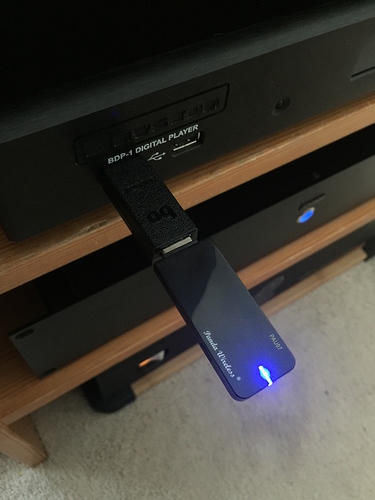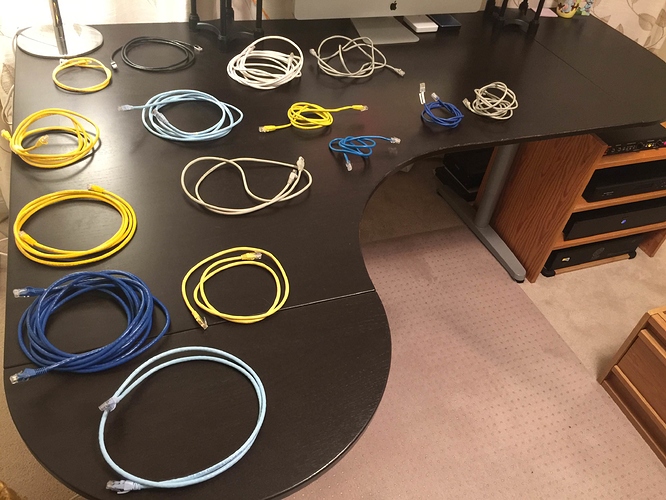Hi Evan,
I might have to agree with you regarding the USB dongle. Now I haven’t had it for a long time, so my opinions are subject to change. For reference, I do have the BDP-1 local playback with flash drives and ethernet via LPS as something to compare to. It lets me know if any changes are moving towards or away from it. I did add a spare Jitterbug and it helped bring the sound closer to what I was hearing previously.
Connection wise, I’ve tried local playback with flash drives, bridged ethernet connection between Mac and BDP-1 without any switches/routers, powerline adapter, switches powered by stock ungrounded power and LPS, shielded and unshielded cables with various grounding.
I obviously don’t have any tools or measurements to offer. I can only offer my experience and try to make sense.
I’ve noticed 2 audible aspect in particular that were variable to me between these configurations. It’s hard to tell how these interact and compound.
-
Noise floor (perceived?) - How black the background appeared. Usually the more black the background is, the more dynamic things sound and clear. The flash drives with local storage is right at the top. I found the powerline to be the worst at this, aside from other obvious audible/interference problems. Having the switch powered by the LPS brought the lowest that I could with ethernet.
-
Treble modulation (RF?) - With some combinations, especially when swapping out for grounded shielded cables, I noticed that it was possible to keep the noise floor relatively same, but somehow the sound’s character would change in comparison to UTP. It would be bright and this may result in the appearance of more detail. UTP connection sounded warm and sonically the same as flash storage playback. Only slight difference was in perceived noise floor. Both were dry and warm sounding.
I have 2 instances of this. It holds up with both wireless dongle and wired. When I used the LPS powered switch and swapped out for UTP and shielded ground connected cables, the noise floor appeared very similar, but one was a bit bright and thin sounding with a regressed plane. I’ve been told this is attaching a RF antenna to the ground plane.
With the Wifi dongle and nothing attached to the BDP-1, the noise floor was quiet as local drive playback. However, the sound did come a bit bright and splashy sounding like with the shielded cables. I added the Jitterbug and the noise floor stayed the same, but the sound become more like how UTP sounds.
I suspect these differences may come down to complete galvanic isolation and any RF interference.
I just want to reiterate that all these devices and network gear, including cables, were in the $5-$20 price range. The most expensive thing is the Jitterbug at $50 and Teradak LPS for the switch at $50. I’m not advocating spending crazy money on this.
This was mostly for me to try and make sense of things. I know there will be plenty rushing to say this is all in my head. Fair enough as I cannot offer any measurements.
For me, the challenging thing actually has not been detecting differences. Rather, it has been trying to make sense of these differences. People differ quite a bit in their sonic preferences. So my opinion of which sounded better wouldn’t be useful to anyone else. Instead, I wanted to try and figure out which sounded more ‘correct.’ Having that baseline of local storage playback helped in navigating. Still, it’s very tricky.

 ) To be fair, it was completely overlooked because once you start connecting the shield to the ground, things start to sound a lot different. So in comparison, I never found it necessary to look at differences among various UTP or ungrounded designs. I still haven’t gotten around to comparing the UTP, so I’m not claiming anything here.
) To be fair, it was completely overlooked because once you start connecting the shield to the ground, things start to sound a lot different. So in comparison, I never found it necessary to look at differences among various UTP or ungrounded designs. I still haven’t gotten around to comparing the UTP, so I’m not claiming anything here.

